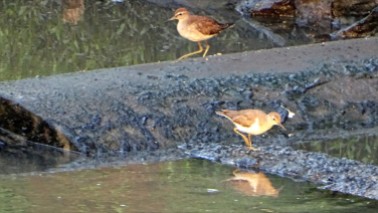A lifer! The brown bird chirped intermittently as it flitted through the base of reeds. Our boatman poled the skiff as quickly as he could to keep up. It was a clamorous reed warbler, recognizable by the white supercilium and round-head, a bird with the wonderful binomial Acrocephalus stentoreus. Looking at the distribution of this bird, also known as the Great Indian reed warbler, I’m puzzled. It is reported from a lot of disconnected patches across the world: as far west as the banks of the Nile, in the north Kazhak plains, southwards around the Java Sea, and eastwards in the Philippines. The thickest sightings are in India and the Philippines. Why is it so patchily distributed? Does that mean that the wetlands where it lives are drying up?
There aren’t many places on WordPress where bird watchers can share posts. If you post any photos of birds this week (starting today and up to next Monday), it would be great if you could leave a link in the comments, or a pingback, for others to follow. There is no compulsion to post a recent photo, but it would help others to know when and where you saw the bird. You might consider using the tag “Bird of the Week” in case people search for old posts using it. I hope you’ve had the time to look at what others have added this week and in the previous weeks.














